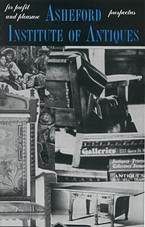|
Quirky And Colorful, But Here To Stay? 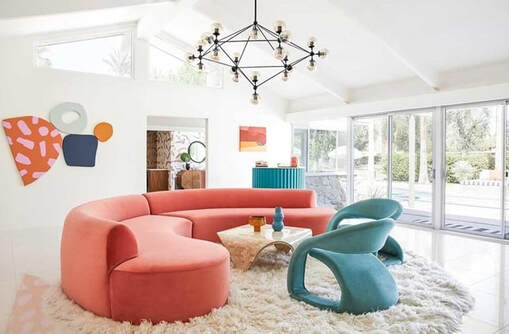 80s Exuberance & Style 80s Exuberance & Style New York - It wasn't that long ago that antique and vintage dealers everywhere were clamoring for anything Mid-Century Modern (MCM). Even poorly imitated copies of this twentieth-century motif were being snatched up as quickly as they were being produced. However, over the last few years, many in the decorative arts community have been noticing a change in tastes, one that seems to favor a shift away from the more austere lines of the MCM movement, and towards a more playful and vibrant aesthetic complemented by bold colors and a mish-mash of design elements. Known as the Memphis Design Style (MDS, or "New" Memphis Design Style), this peculiar and somewhat quirky decorative arts period from the 1980s seems to be having 'a moment' with many of today's vintage collectors and buyers. 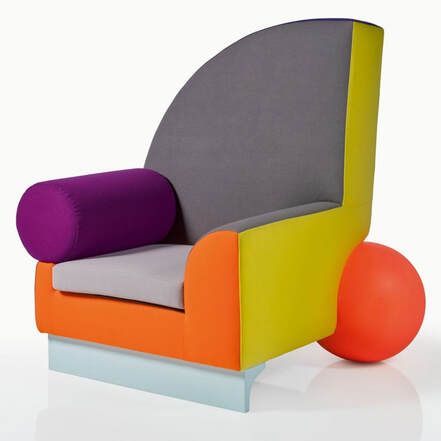 1982 Bel Air Armchair By Peter Shire 1982 Bel Air Armchair By Peter Shire Originally conceived by Italian architect Ettore Sottsass and twenty-two other like-minded colleagues, they formed the Memphis Group, also known as Memphis Milano, with an infusion of rebellious spirit directed against the prevailing design trends of the era. They rejected the sleek and streamlined styles such as mid-century modern and brutalism, opting instead for a more avant-garde approach. This group unveiled their innovative Memphis Style at the 1981 Milan Furniture Fair, the renowned Salone del Mobile. Their creations merged the influences of Art Deco and pop art, featuring audacious color palettes, daring geometric shapes, inexpensive materials, and patterns that clashed in a seemingly chaotic but deliberate manner. This audacious style garnered international recognition and polarized consumers, who either embraced or rejected it. Carey Saunders, a long-time vintage dealer from southern California, says she's been all in on the Memphis Style for a number of years now. Like many dealers on the west coast, Saunders says that she'd always been heavily invested towards MCM inventory in the past simply because of its salability. "For years that's all we sold," she says, "but I remember a time as a child when my folks had this 'look' in our two-story condo, so I started searching around for items that reminded me of that." Saunders says that by 2018, she'd amassed a fairly extensive collection and began to offer it for sale on her website under the Memphis Design Style moniker. "I had no idea it would be so popular," she conceded, "it literally took off from day one." It's not just young people either, according to Saunders, who says that while the design motif probably fits in with young modern urbanites more than anyone else, she's also seen it adopted by older collectors who have a sense of nostalgia for the 80s theme and time period. Colorful furniture like the Bel Air armchair by Peter Shire from 1982, symbolizes what Saunders believes is the essence of the Memphis Style. 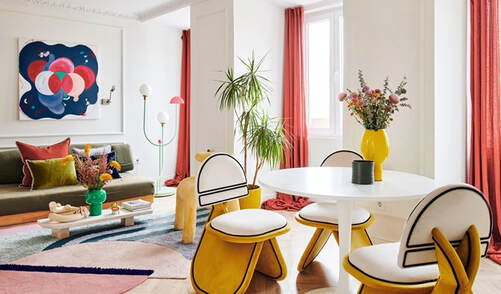 Toned-Down Memphis Design Stylings Toned-Down Memphis Design Stylings However, it's not just those in the antique and vintage business that are noticing the trend, says Trevor Albero, who works as a consultant for a Roma design studio with offices in both New York and Italy. "Many of the downtown buildings we refurbish and restore are also furnished by us as well," he says. "In the past that would often include a good number of MCM pieces, but today we're executing a lot of Memphis Design style elements into our overall approach." Albero feels that MCM has reached it's zenith with many of his firms clients, "They want something new, not necessarily linear, but something with a little more color and pizazz." Albero says he's also aligned with many others within the industry in the belief that nostalgia is one of the primary drivers behind the renewed interest in the Memphis stylings. "The 1980s was a period marked by a unique blend of exuberance, optimism, and innovation," he says, "as people look back on the decade with fondness and nostalgia, they often seem to be drawn to the design elements that evoked those spirited aesthetics." Albero believes that Memphis Design's signature use of vibrant colors and playful shapes resonates with those who have a deep-seated affection for the 1980s, and serves as a way to infuse a sense of nostalgia into contemporary living spaces. "Many people confuse the overt, over-the-top look of the Memphis Style with it's more refined and toned-down aesthetic that blends easily with other similarly themed pieces," he says, "it's all about balance." 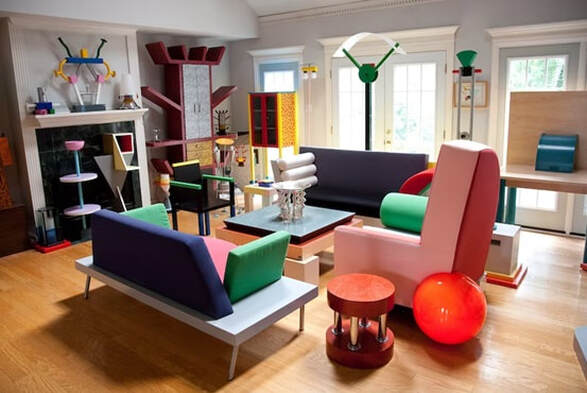 Too Radical For Mainstream? Too Radical For Mainstream? For Karen Smith, whose vintage resale business, and Miami interior design firm that preaches all things 80s, it's been a long road coming to where we are today. "I've always loved the crazy colors and design features that came with the Memphis Style," she says. "but it's clearly not for everyone." Smith says that there are definite demographics and geographic considerations related to this motif. "I don't think Memphis will necessarily work on a farm in Idaho as well as it would on South Beach," she says, "but then again, I wouldn't expect to find many antique or vintage dealers offering this type of décor in the heartland either." Smith says that up until about five years ago finding any authentic pieces from the 1980's was difficult, but that today she's seeing plenty of reproductions on previously themed MCM home furnishing sites like West Elm and even more mainstream companies like Wayfair. "At one point in time MCM was just about all I saw on these sites," she quipped, "but today there's definitely more choice, including a lot of Memphis stylings." However, even with the increase in demand, many antique and vintage dealers say they're going to take a 'wait-and-see' approach. For Pamela Arnold, who manages a group of vintage booths at an indoor antique mall near Chicago, it's all about scope. "Memphis Style may be having a bit of comeback," she says, "but the reality is that it wasn't that big of a movement to begin with, not like Mid-century modern was." Arnold feels that Memphis stylings will likely be much more regional in popularity than anything. "I can see both the coasts getting into this," she says, "but I really think it's a very particular type of décor that's going to have to be paired with a very particular type of home and individual." In the end, Carey Saunders also believes that the Memphis Style is likely to exhibit only a regional charm at first, in much the same way MCM did, but thinks it will slowly expand to other urban centers beyond just the coasts. "Memphis is a combination of nostalgia, a desire to break free from minimalism, and a fascination with unique and playful aesthetics," she says. The move toward artistic expression in interior design and the limited availability and rarity of original pieces is what Saunders sees as the likely fuel for growth. "If you look at the trajectory and reemergence of MCM," she says, "there are striking similarities as to where this might go..." - A.I.A Staff Writers 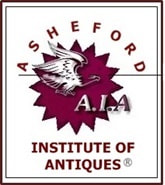 NOTE: For readers seeking more information about the Asheford Institute Of Antiques distance-learning program on professional-level appraising, the study of antiques, collectibles, vintage and mid-century modern, please click here to visit the school's Home Page. Should you have additional questions about the Asheford program, you can also write to the school at: info@asheford.com or call the Registrar's Office toll-free at: 1-877-444-4508. Have The Glory Days Of The 1980s Returned?  A New Generation Raises Awareness, And Prices A New Generation Raises Awareness, And Prices New York - It's not everyday that you hear longtime decorative arts dealers exclaiming the virtues of the antique and vintage business, but that's exactly what happened recently at one of the country's largest antique shows in Round Top, Texas, this year. With over eleven miles of vendors, Round Top has grown to become one of the most important national antique venues for serious collectors and buyers alike - rivaling even the famous thrice-yearly Brimfield shows for marketplace dominance. For those who took to the backroads of Texas to visit the festival, business was brisk. Very brisk, according to many of the well-established dealers who participated in the show. Robert Phillips, who's worked as a longtime industry reporter for a number of antique and decorative arts publications, wrote that he intended to spend most of the show interviewing dealers about what was selling best, but instead, came away surprised to find out that it was pretty much everything in their inventory that seemed to be moving. "Most dealers I spoke with were just stunned at the cross-section of buyers," said Phillips. "They were literally snapping up Mid-Century to Victorian and anything else in between." Phillips says that some of the older dealers whom he spoke with at the festival's close, had even begun drawing parallels to the golden-years of the industry back in the 1980s, when prices were at an all-time high. "It wasn't everyone, to be sure," said Philipps, "but you could just tell from many of the old-timers that it was like a cresting point - something they hadn't seen in almost forty years." 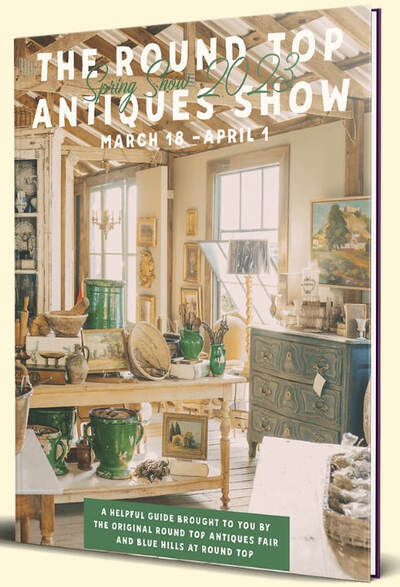 Antique Show Vendors Report Strong Sales Antique Show Vendors Report Strong Sales However, for those on the 'other side' of the table, like Andy Shelton, an avid collector of vintage and Mid-century lighting, who's been collecting for over three decades, it's become much more of a slog recently to score a deal. "I used to be able pick up good vintage pieces for peanuts," say Shelton, "but it's becoming increasingly difficult with more and more younger collectors entering the market." Shelton remembers a time not too long ago when there was virtually no one under thirty at Round Top, or almost any antique and vintage show for that matter. "Finding quality items at cheap prices was easy-peasy," he says. "Nowadays you're literally jostling with every beanie-capped, bearded hipster for standing-room only at the sales tables." Shelton admits that while it's getting harder to buy at reasonable prices, the flipside is that his own long-term collection has also soared in value. "A lot of the dealers are making good money now," says Shelton, "which is great in one way I suppose, because it'll allow them to sus out and offer up even better finds in the future." It's not that Shelton wants to pay more for his collecting habit he says, "It's just that I have to recognize current market conditions for what they are; not what I want them to be." For others though, it's not just the 'larger' shows that are witnessing the price increases, but many of the smaller venues as well. Becky Carlin, an east-coast dealer who shows at events from New York to Miami, says that prices for many items she used to discount have risen sharply in the last couple of years. "It's not every single piece," says Carlin, "but it definitely started with the Mid-Century craze and has gradually expanded into other areas." Carlin wasn't around during the heyday of the 1980's, but says she's heard plenty of other antique dealers talk about the "glory days," and thinks there's a pretty good chance we might be headed that direction shortly. "Most of my buyers are now young twenty and thirty-somethings," she says. "They've got the collecting bug and they're just starting to move into their maximum earning potential." Carlin says that five years ago rustic pine washstands and harvest tables wouldn't move for months, but that now she has a wait-list for some of these items. "It's a different buying aesthetic than what it used to be," says Carlin, "today's younger buyers are not just interested in price anymore, but also in the history behind the pieces." Taking that one step further, Don Holtz, a young entrepreneur who sells vintage furniture and retro-style decorative pieces on sites such as OfferUp and LetGo, says that it's no surprise that antique and vintage prices are rising. "The trend of going vintage has stormed onto the scene for a number of reasons," says Holtz. "Firstly, people are becoming more conscious about sustainable living and promoting the value of old items rather than buying new, and secondly, because of the uniqueness and rarity that many of these products afford." Holtz says that most of the queries he gets online related to his listings are from people in their twenties and thirties who want something different to decorate with, other than just the local flat-pack selection at their big-box store. "When I started selling, just before Covid began," says Holtz, "my prices were all negotiable - they had to be - I was selling stuff from the 1970s and 80s." Today, Holtz says he gets multiple bids on most pieces that he lists. "Prices have definitely gone way up," he notes, "especially for some of the older 70s white plastic modular stuff like tables and chairs." Working with a small budget at first, and not wanting to leave anything to chance, Holtz also formed a membership of online sellers into a group that were able to share information amongst themselves about market trends and sales when first starting out. "It's been a real eye-opener for us to see where things have gone," he said, "especially when comparing sales figures - which have jumped dramatically for all of us in the past three years." Holtz doesn't know exactly what to attribute the increase to, but like many others, feels that it's probably a combination of new buyers, who are also likely to have a new (and more sustainable) outlook when it comes to investing in the decorative arts. There are probably a multitude of yet-to-be discovered reasons for the recent resurgence in popularity (and rise in price) related to today's antique and vintage marketplace, and while this increase may not be reflected in absolutely every geographic region or area just yet, there can be absolutely no doubt that just like a rising tide, it will be coming. Or, as Mr. Phillips so succinctly summarized from his visit to the Round Top festival in Texas recently, "The allure of historical pasts is compelling, and antique items possess that aura of elegance that is very seldom found in modern-day products, making them not only extremely desirable, but available... for the right price!" - A.I.A. Staff Writers  NOTE: For readers seeking more information about the Asheford Institute Of Antiques distance-learning program on professional-level appraising, the study of antiques, collectibles, vintage and mid-century modern items, please click here to visit the school's Home Page. Should you have additional questions about the Asheford program, you can also write to the school at: [email protected] or call the Registrar's Office toll-free at: 1-877-444-4508. |
AIA StaffWe're providing our students and reader's with the latest breaking news on events and happenings that we think might be of interest to both collectors and dealers alike. Including changes within the world of antiques, vintage, collectibles and appraising that might just have an effect on your bottom line. We're also interested in hearing from you - so if you've got a great newsworthy story, let us know, and you just might find it here! Archives
July 2024
CategoriesLegal Disclaimer: Extraneous opinions, statements and comments made by individuals represented within these posts do not necessarily reflect those of the Institute. The publication naming of specific business entities, organizations, and concerns, contained herein, in no way represents an endorsement or recommendation of services or products by the Institute. Publicly identifiable information contained herein (including, but not limited to contact information), has been intentionally limited where possible, due to privacy and legal concerns related to the digital dissemination of information through online means. All views expressed herein are those of their respective owners. The Institute is in no way responsible, financially or otherwise, for the accuracy or validity of statements contained within published posts from sources that originate and appear outside of the written and expressed views of those submitted by the Institute.
|


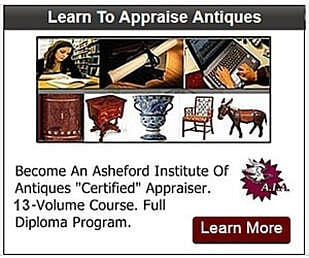
 RSS Feed
RSS Feed
